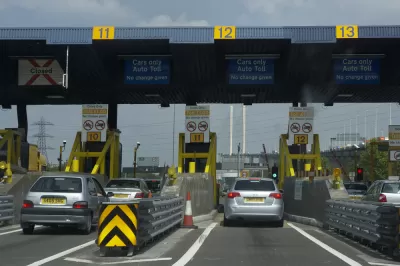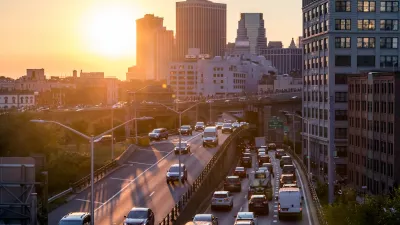New York City might need some courage to go through with its idea sto charge drivers to enter parts of Manhattan. Luckily there are International models of success to choose from.

Eillie Anzilotti lists five lessons in congestion pricing from cities that have implemented schemes similar to those in the works New York City, and considered much more speculatively in Los Angeles as well.
Anzilotti begins by noting that New York City has gone further with congestion pricing than any other city in the United States, despite several international examples. The slow progress of the idea is telling, and cautionary:
Car dependency’s relatively strong hold in the U.S.–even in the city where proportionally, the fewest people drive–posed a significant hurdle in the push for a fee on driving in New York City, which has been years in the making. Now that the policy is set to be introduced, some transportation analysts have expressed concern that in trying too much to appease the car lobby, New York’s policy might get too watered down to meaningfully address the city’s traffic and subway budget needs.
So to inform a realistic discussion of the idea, Anzilotti lists the following lessons, with more detail provided in the source article:
- Make the fee as broad as possible.
- Be ready with alternate options.
- Don't think of the policy as set in stone.
- Focus on the benefits.
- Just do it.
FULL STORY: 5 lessons for New York’s congestion pricing from cities that have made it work

Planetizen Federal Action Tracker
A weekly monitor of how Trump’s orders and actions are impacting planners and planning in America.

Maui's Vacation Rental Debate Turns Ugly
Verbal attacks, misinformation campaigns and fistfights plague a high-stakes debate to convert thousands of vacation rentals into long-term housing.

San Francisco Suspends Traffic Calming Amidst Record Deaths
Citing “a challenging fiscal landscape,” the city will cease the program on the heels of 42 traffic deaths, including 24 pedestrians.

Amtrak Rolls Out New Orleans to Alabama “Mardi Gras” Train
The new service will operate morning and evening departures between Mobile and New Orleans.

The Subversive Car-Free Guide to Trump's Great American Road Trip
Car-free ways to access Chicagoland’s best tourist attractions.

San Antonio and Austin are Fusing Into one Massive Megaregion
The region spanning the two central Texas cities is growing fast, posing challenges for local infrastructure and water supplies.
Urban Design for Planners 1: Software Tools
This six-course series explores essential urban design concepts using open source software and equips planners with the tools they need to participate fully in the urban design process.
Planning for Universal Design
Learn the tools for implementing Universal Design in planning regulations.
Heyer Gruel & Associates PA
JM Goldson LLC
Custer County Colorado
City of Camden Redevelopment Agency
City of Astoria
Transportation Research & Education Center (TREC) at Portland State University
Jefferson Parish Government
Camden Redevelopment Agency
City of Claremont





























